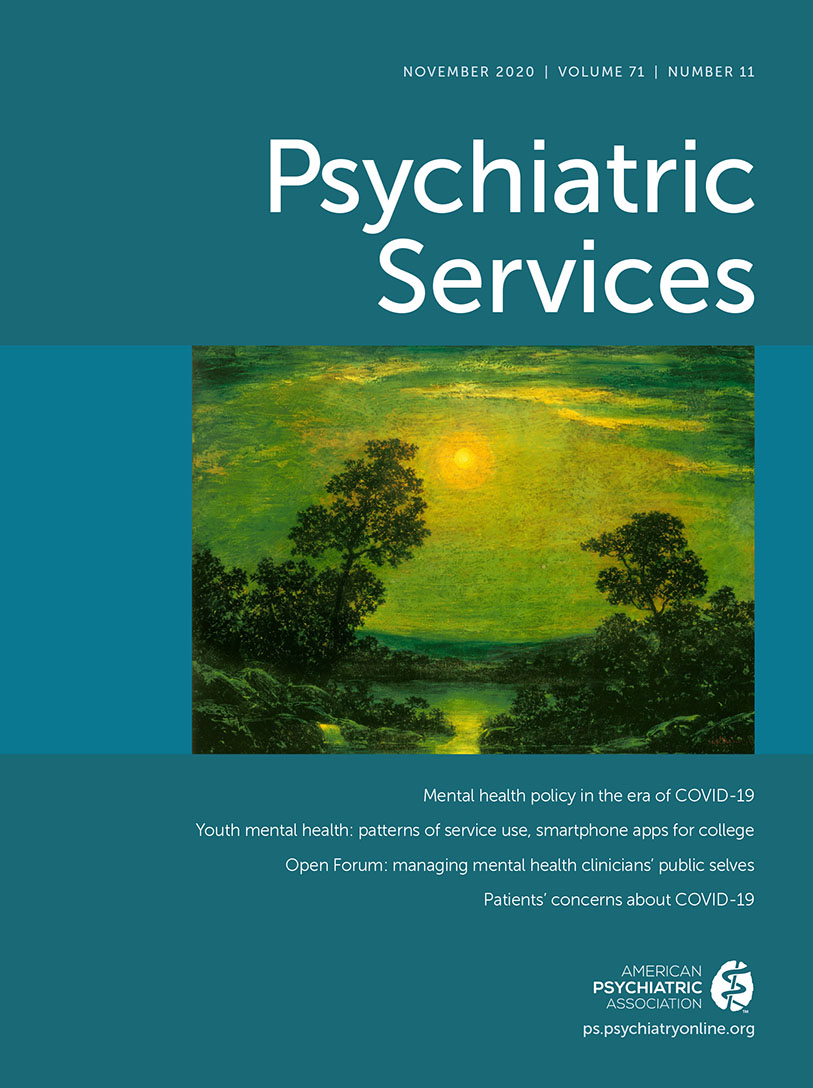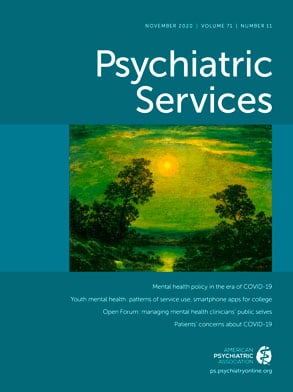Emergency departments (EDs) throughout the United States are overwhelmed with youths in mental health crisis. Families often use EDs as access points of care when their current care is not meeting their needs (
1). A recent study revealed that national pediatric ED visits for suicidal ideation nearly doubled from 580,000 in 2007 to 1.12 million in 2015 (
2). ED discharges are often high risk: research suggests that 19%–28% of youths presenting for a suicide attempt are rehospitalized within 6 months of hospital discharge, and 10%–18% reattempt suicide within a year of an initial attempt (
3,
4). Within Oregon and many other states, communities are struggling to care for increased numbers of youths with suicidal behavior and complex mental health challenges. Current systems of care are inadequate to meet these growing needs.
Strategic Partnerships
In 2014, in response to the increasing number of youths presenting to EDs in mental health crisis, the Oregon Health Authority (OHA) convened a work group including providers from EDs and other levels of care, county mental health programs, commercial and public payers, and families and young adults with experiences in the mental health system. The work group was asked to identify and evaluate systemic issues affecting access to care for these youths.
The group identified three main contributing factors: system capacity and gaps in the continuum of care, coordination and referral practices, and payment barriers. A statewide shortage of inpatient psychiatric beds, lengthy outpatient provider waitlists, and coverage disparities among payer groups made it difficult for EDs to transfer youths to inpatient psychiatric programs or discharge them with adequate mental health services. As a result, many youths were held in EDs for longer than medically necessary, causing additional stress for the youths and their family and creating a significant impact on the health care system (
1).
The group recommended that OHA fund ED diversion programs, which would provide immediately accessible and safe transitional care. These programs were instructed to be blind to patients’ insurance status and to leverage existing community-based care options, using the new funds to expand the capacity to serve youths boarding in EDs (
1).
Later that year, OHA launched four pilot programs in counties with high rates of youth psychiatric boarding. Since then, five additional counties have adopted the model, with further expansion in process. Each county received funds to collaborate with hospitals and local providers to create their program. While the work group helped guide the major structure and objectives of the program, sites were encouraged to capitalize on their local community’s strengths.
As a result, different financial models emerged, from counties that operate solely with funds from OHA to those that leverage OHA dollars with county general funds or financial support from the EDs or crisis centers they serve. Similarly, a range of clinical operation models were developed. Some counties funnel youths directly into public mental health services, and others subcontract with local agencies to provide care. Most also subcontract with a family peer support organization. Many counties use the funding to expand the capacity of their community partners’ already established programs.
Generally, urban programs have a stronger focus on providing intensive clinical stabilization and connections to longer-term services, whereas rural programs focus on crisis response and coordinating rapid access to community providers (
5). The programs providing clinical care generally use master’s-level clinicians and psychiatric providers, whereas most rural programs utilize qualified mental health associates.
Program Description
The ED diversion programs, now called Crisis and Transition Services (CATS), provide rapidly accessible, community-based care for youths presenting to EDs in mental health crisis. CATS serves youths up to age 18 who meet criteria for psychiatric inpatient admission but have the potential to safely transition home with sufficient support after initial evaluation and safety planning in the ED. The program lasts 14–60 days and serves as a bridge from ED discharge to engagement with long-term outpatient providers.
CATS provides transitional clinical care, with all counties offering safety planning, lethal means restriction counseling, 24-hour crisis support, and care coordination. Other services variably include in-home individual and family therapy, psychiatric evaluation and medication management, and family peer support (
Table 1). Clinical partners work with families to coordinate services that meet their needs, including connecting them with therapists and psychiatric providers, helping them apply for health insurance, and arranging school support. In some counties, families work with a family support specialist (FSS)—a parent or guardian with experience raising a child with emotional, behavioral, or mental health challenges. The FSS helps the family develop the capacity for systems navigation, crisis management, and self-advocacy and may work with families for an additional period after the clinical partner closes care.
Evaluation
As CATS expanded, the state identified a need to monitor outcomes to ensure program effectiveness and guide program development. In 2017, OHA assembled a technical assistance team at Oregon Health & Science University (OHSU). The team includes clinical psychiatry and emergency medicine faculty, research staff, and a family support specialist. In January 2018, the team began collecting data to monitor patient outcomes, articulate each program’s distinct characteristics, and develop a standardized model of care.
CATS community partners collect demographic, referral, and service data for each youth and family that enters the program. Select sites also participate in an outcomes study and collect additional data for the youth’s clinical presentation at CATS intake and discharge. OHSU calls families from these programs 2 months after program completion to collect parent feedback and clinical outcome data. The team provides orientation and support to the community teams around data collection and management.
From January 2018 to June 2019, CATS served 1,033 youths and their families. More than half presented to the ED with suicidality (N=615, 60%), at an average age of 14 years old. The program is free to families and is intended to be blind to insurance status. Participants’ health insurance coverage included Medicaid (N=496, 48%), commercial coverage (N=403, 39%), uninsured (N=72, 7%), other health care coverage (N=31, 3%), and multiple coverages (N=31, 3%).
Several early findings support the positive effect of this program. Of youths enrolled in CATS, 74% (N=764) were discharged from the ED within 24 hours, and 91% (N=940) were discharged within 48 hours. Most youths (N=915, 89%) completed the program. Preliminary data collected at the 2-month follow-up from 184 families indicated that 71% (N=131) of youths were still engaged with an outpatient therapist, and 57% (N=105) had a psychiatric provider. A high number of parents reported that their youth’s current care was now meeting their needs (N=153, 83%) and that they were confident about what to do in a crisis (N=167, 91%).
Although families receive intensive supports during the program, with a clear focus on safety, this high-risk population of youths has experienced adverse events, although fewer than projected for this population. In the 2 months after completion of the program, 7% (N=12) of the youths had a suicide attempt, 7% (N=12) re-presented to an ED, and 11% (N=21) were admitted to an inpatient psychiatric program.
Barriers to Implementation
The CATS program has encountered several key challenges in its early years of operationalization. Given that CATS sites were initially tasked with developing individualized programs based on existing community resources, subsequently trying to standardize services across different programs has proved challenging. Programs have a range of financial resources, cost-leveraging options, and availability of licensed mental health providers. Although some progress has been made in standardizing the models, there is still significant variability in important core elements, such as being insurance blind.
Building team cohesion among the partner organizations has required strategic technical assistance from OHA and OHSU. Clinical and peer staff approach work with youths and families differently. Peer support is principled in family-driven care, in which the family’s self-identified needs determine the support. For clinical staff, the child’s mental health assessment often guides treatment. Throughout the development of the program, some family support specialists have expressed skepticism about the intentions or effectiveness of mental health providers. Similarly, some clinical partners have not understood or appreciated the role of family support specialists, leading to poor team integration.
The model’s effectiveness also depends on the continuum of accessible care within the community. CATS is a short-term bridge to longer-term outpatient supports, and in some regions, the shortage of available providers or intensive-level outpatient services limits the program’s success. This is a common challenge in transitional crisis work; the program is capable of stabilizing the acute crisis but is unable to address the limited outpatient capacity in the community.
To address these challenges, OHA and OHSU convene a twice-yearly CATS learning collaborative in which teams can learn from and problem solve with other programs throughout the state. The learning collaborative includes team-building activities, training on best practices, and guest speakers on topics such as the education system and the substance use treatment network. OHSU also provides one-on-one technical assistance, training, and guidance to individual programs. Building trust among partners and providing continued professional development have been essential in creating a functional team dynamic.
Program Effect
In 2015, the four pilot programs presented their models to elected officials and family advocates working on hospital transition legislation. Initial program successes and barriers helped shape new laws that directly affect ED transitions of care. More recently, feedback from community partners has informed statewide efforts to increase access to intensive community-based services for youths and to introduce CATS as a level of care that can be reimbursed by private and public insurance.
In 2018, commercial insurance representatives expressed interest in exploring CATS as a covered service. Current CATS providers, OHSU, and representatives from partnering agencies are working with commercial insurers to develop plan language and sustainable funding models. Making CATS a billable service under commercial insurance, together with continued investment from OHA, will ensure the ongoing viability of this program.
OHSU continues to evaluate the program’s long-term effectiveness, both in reducing the burden on hospital systems and in improving mental health care for children and adolescents. Further research aims to identify elements that have a positive and lasting effect, allowing for evidence-based recommendations regarding a final model and more widespread adoption statewide.
CATS is a novel and innovative program that addresses a significant need. The program works within a complex system of various counties, funding agencies, and resource-constrained locations. It strengthens the continuum of care and provides a crucial bridge during the period in which a youth is at high risk to reattempt suicide or re-present to an ED. Intensive, comprehensive crisis care may prevent further impairment and improve longer-term recovery as well as the health and well-being of families and their communities.

